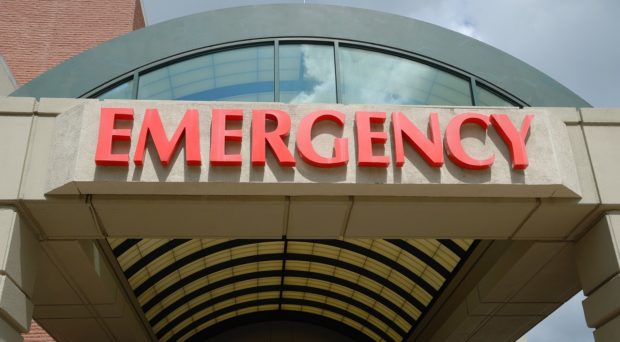
Between March and April 2020, SARS-CoV-2 hit hard on the province of Brescia, Lombardy, which rapidly became among the top five provinces in Italy for the number of COVID-19 cases (1.4% per 100.000). During the pandemic, hospitals faced increasing pressure, where people living with HIV risked to either acquire SARS-CoV-2 and to interrupt the HIV continuum of care.
Our observational study, conducted by the Department of Infectious and Tropical Diseases of the University of Brescia at the ASST Spedali Civili, draws attention to the impact of Covid-19 in the care of HIV patients and highlights the importance of guaranteeing continuity of care even in an emergency context.
The study considered the number of visits carried out, antiretroviral drugs (ART) pack dispensed, new diagnoses and hospitalizations. We compared the data for the two-month period October-November 2019 with those of the two-month period March-April 2020. The research involved a group of 3,875 HIV-infected patients, with an average age of over 51 years.
Looking at the impact of COVID-19 through the lenses of UNAIDS 90-90-90 targets
In order to end the global AIDS epidemic, the UNAIDS has set an ambitious target called 90-90-90, which aims to ensure that 90% of all people living with HIV will know their status, 90% of all people diagnosed will receive sustained antiretroviral therapy (ART), and 90% of all people receiving ART will have viral suppression.
Brescia signed the Paris Declaration in July 2020, joining the global Fast-Track Cities initiative which outlines a set of commitments to reach the 90-90-90 targets. HIV specialists need to review the current programs to identify the potential barriers that might hinder the achievement of these goals during SARS-CoV-2 pandemic.
The first UNAIDS target (90% of all people living with HIV should know their HIV status) is based on HIV testing and is the first step towards initiation into the HIV care continuum. The COVID-19 pandemic had a negative impact on HIV screening programs in our province, as we observed.
The number of new HIV diagnoses decreased between the two periods, from an average of 6.4 per month in 2019 to 2.5 in the bimester of the COVID-19 pandemic (p = 0.01). Of these, AIDS defining conditions were present at the moment of HIV diagnosis in two patients. On March 8th, 2020 the Italian government declared the implementation of community containment measures in order to contain the diffusion of SARS-CoV-2, which included social distancing, movement restrictions and quarantine.
Predictably, these measures drastically reduced the access to routine HIV testing. For a near future, it will be important to organize health services in order to guarantee a safe and continuous access to HIV testing, which is a fundamental health service and a detrimental step towards HIV elimination.
During the first COVID-19 wave, missed visits increased from 4.9% in 2019 to 8.1%. The good news is that over 67% of patients were able to carry out the control visit remotely over the phone, thanks to telemedicine programs.
The second target, (90% of all people with HIV diagnosis should be maintained linked to HIV care) is based on offering and maintaining HIV care in all HIV-infected patients. Our preliminary experience shows that the percentage of missed visits increased from 4.9% in 2019 to 8.1%, mainly women and immigrants, during the first wave of SARS-CoV-2 pandemic (p < 0.01) in our center.
However, the good news was that over 67% of patients scheduled in the period between March and April 2020, were able to carry out the control visit remotely via telephone interview, thanks to the introduction of telemedicine programs. Our experience can be the beginning for new programs for annual evaluation of stable patients.

The third target, (90% of PLWH with suppressed viral plasmatic loads) is based on ensuring that antiretroviral therapy is available to PLWH and on reinforcing adherence to ART.
During the study period, a reduction of ART packs distributed was observed (- 23.1%), despite the contribution of numerous voluntary associations in home deliveries. The highest decrease was observed in people with non-Italian nationality compared to Italian nationality (− 27.4 vs − 20.1%, p < 0.05).
It is interesting to note that the overall decrease in drug packs withdrawals was lower in patients treated with protease inhibitors (- 16.6%), possibly due to the therapeutic role of these drugs in treating SARS-Cov-2 infection initially hypothesized and subsequently not confirmed. However, when we compared March and April separately, we observed a higher drop in drugs dispensation in March (− 33.6%) with a trend towards normalization in April (− 12.6%). In the next months, we will evaluate the impact of this reduction of drugs distribution on HIV viral load.
Clinical consequences of SARS-CoV-2 infection
Another indicator to be considered is the clinical consequences of SARS-CoV-2 infection in our cohort. The analysis shows that hospitalizations in HIV-positive patients increased from 7.7 patients/months during 2019, to 12.5 patients/months between March and April, 2020. Among these, 48% were hospitalized because of SARS-CoV-2 infection.
This study supports the hypothesis that telemedicine represents a useful tool to effectively contain the negative consequences in HIV-positive and in others patients affected by chronic conditions during emergency events.
However, HIV testing services and strategies need being supported and promoted even in critical periods. Women and immigrants turned out to be a population at risk in terms of the percentage of patients lost to follow-up during the emergency period, which is why more particular attention must be paid to these patients.
Thanks to the enormous commitment at the forefront of health care professionals, pharmacists and voluntary associations, the higher attention to these vulnerable populations during the emergency has limited the negative consequences on their health. Anyway, our experience highlights the importance of resilient health strategies and programs that can cope with exceptional events.
Comments